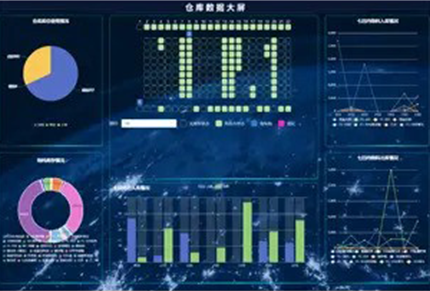Create Time: 10 ,23 ,2024
Warehouse management systems (WMS) remain the transactional and process management foundation for inventory control and order fulfillment in most DCs. In recent years, when Modern has surveyed readers about WMS use, close to 80% have told us they use some type of WMS.
That widespread adoption is because a well-implemented WMS will control inventory, and manage key processes like putaway, picking and replenishment.
But WMS doesn’t do everything well, especially older legacy systems that lack functionality like a labor management system (LMS) module, prebuilt connectors to automation, or flexible tools for creating new workflows. That's giving rise to software solutions that make existing warehouse management systems better.
These software vendors are focusing on new types of solutions that give WMS processes a boost, either by orchestrating multiple resources, building new workflows and screens for task execution, or simplifying the use of robotics. Here’s an overview of how they help.

Keith Moore, CEO of AutoScheduler.AI, whose AutoScheduler warehouse resource planning and optimization software platform is touted as a “WMS accelerator,” says WMS is essential for governing DC processes, but WMS solutions typically lack the ability to optimize and plan all the machine and labor resources and material moves and staging to ensure orders get out the door complete.
In practice, adds Moore, many steps need to be synchronized, such as dock schedules, staging of pallets for outbound shipping, any new pallet builds or repalletizing that needs to take place, or any crossdocking that should be triggered, to achieve end goals.
Most WMS are not generating sequenced, optimized plans, notes Moore. Because of that, Moore says he likes the analogy that WMS—in terms of getting you to a goal—is like having a good, working car. A car will get you to your destination, but if all you have is a static, printed map for navigation, you might take a wrong turn or run into a traffic jam, fouling up your plans.
By contrast, Moore says, a mobile map app is both dynamic and instructive, which is why people today use both cars and mobile maps to get places efficiently.
“What was transformative about Google Maps is that instead of just telling you where to start and where to end, it was with you every step of way, so that even if you do make a wrong turn, it will tell you, ‘just take a U-turn here to get back on track,’” Moore says. “That is like what our solution does for warehousing. The software considers all the limitations and constraints that are going to keep you from getting to where you need be operationally and with service levels.”
Sensor-enabled solutions that boost WMS inventory accuracy are another trend. In particular, multiple vendors offer autonomous drones that feed data into AI-based software to gain a highly accurate view of inventory.
The beauty of an autonomous drone solution is that it can always be giving operations a highly accurate view of what is actually in the racks, and passing discrepancy data back to a WMS, without all the labor time and effort involved in manual cycle counts and hand scanning of labels, says Sean Mitchell, vice president of customer success with Gather AI, which offers a drone solution.
“A WMS is only as valuable as the accuracy of the information,” says Mitchell. “Our solution allows customers to conduct cycle counts 15 times faster than a human on a lift can. The increased counting volume ensures that discrepancies are fixed quickly, so the WMS truly reflects what is in the physical warehouse.”
With IdentPro’s real-time locating system (RTLS) and execution software, LiDAR and other sensors fitted to lift trucks are used to provide real-time positioning data, which helps improve inventory control, while feeding a digital twin of the warehouse to optimize pick paths and pallet transport missions.
“When you track and trace the forklifts, and you know what is on your forklifts, then when you move goods with a sensor enabled truck, you know exactly where those goods have been left,” says Erik van Rikxoort, chief marketing officer for IdentPro. “And with that, you’ve got a 100% visibility into both your fleet and your inventory, and error-free inventory accuracy, without scanning.”
A flat screen added to the cab is used to present a simplified, real-time map of the warehouse showing the operator’s next mission and route to take. “Every truck operator gets an optimized and updated map of the environment,” says van Rikxoort.
Users of IdentPro's solution include international brewer Asahi, as well as Warsteiner, another brewing company. According to van Rixoort, at Warsteiner, the system slashed turnaround times for loading trailers, from close to 40 minutes on average down to about 25 minutes, due to more efficient pallet staging and loading.
Most sites average a 20% to 25% gain in fleet productivity, he adds, enabled by the precise handle on inventory locations from the LiDAR sensors that pinpoint the location where pallets were placed to within 2.5 inches.
“Your operators don’t have to search anymore for missing inventory because we know exactly where everything was placed,” van Rixoort says. “If you are not using RTLS technology and an operator placed a pallet in the wrong rack and your verifications didn’t catch it to send an alert, forget about it—you’re going to be wasting time looking for inventory.”
This is the last one.